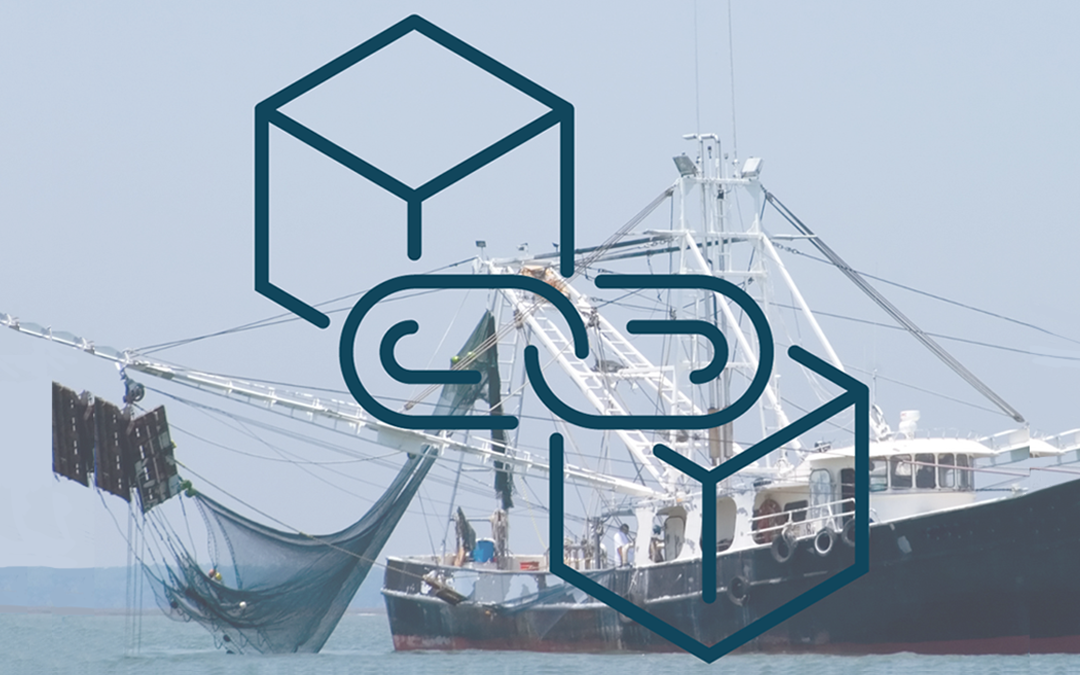Behind the European Sea2See project for a transparent and sustainable seafood sector, lays the objective to implement an innovative traceability platform, based on blockchain technology to improve trust and transparency in the seafood sector.
Blockchain: the foundation technology for modern traceability
Like in several industries, the supply chains in the seafood sector are facing the crucial requirement to improve traceability. Conventional traceability approaches have proven insufficient in an era marked by increasing complexity and globalised trade.
Blockchain, acting as the underlying technology for innovative traceability platforms, presents a promising avenue towards achieving comprehensive and reliable traceability. This, in turn, addresses the growing need for verifiable transparency in supply chains.
Through the promotion of data auditability and accountability among partners in a value chain, blockchain technology plays a significant role in combating fraud, enhancing safety, and ensuring the precision of information within the seafood supply chain. As a result, it emerges as a compelling option for the industry’s future.
But really, how does it work?
Blockchain is above all, a database which has a rather special structure: it is distributed and aims to create a network between different actors who can share secure, engaging and auditable information.
- Building Blocks:
Data shared in the blockchain is stored in “blocks” which serve as data containers. Blocks play a crucial role in the structure and functionality of a blockchain system: they include a timestamp and are linked to each other in the order in which they are created, ensuring the integrity of the entire transaction history. Modifying past information leads to inconsistency with the following blocks, making it extremely easy and quick to detect.
- Distributed Network for Secure Data Sharing:
Blockchain is a distributed database, meaning stakeholders are organized in a network where each participant has a copy of the entire blockchain: these copies are called “nodes”. Any information added in one of the nodes is automatically copied to all the other nodes, in near real time, enhancing security and resilience.
- Electronic Signatures:
Every time new data is added, it comes with a digital signature, a “stamp” provided by the node that adds it. The digital signature provides traceability, allowing anyone to verify the authenticity of the transaction back to its origin.
The distinctive structure of the blockchain renders fraud, such as altering a previous record, impossible as it remains visible to all participants. This establishes the foundation for an information audit system, enabling each participant to conduct independent audits.
Utilizing blockchain for seafood traceability in the Sea2See project
In the context of supply chain traceability, a blockchain-based information-sharing network introduces some compelling features:
First, confidentiality is maintained, enabling each participant to audit information without having access to its content. This ensures respect for everyone’s position in the value chain and eliminates conflicts of interest.
Second, progressiveness is achieved, wherein each new participant in the SEA2SEE project seamlessly can synchronize their node with past information. This allows for the gradual inclusion of diverse stakeholders without causing disruption.
Lastly, the deployment of a data sharing system is facilitated by the distributed nature of the database. Each node can be independently connected to each of the participants’ systems (ERP, WMS, etc.) – this approach differs from integrating a new actor’s systems into a large, centralized solution, which is challenging to implement and even more demanding to maintain and update.
In summary, blockchain provides a structured and secure way to store and link data, ensuring the integrity, transparency, and decentralization of the overall data sharing system. From a technical standpoint, blockchain is generally more straightforward compared to numerous other technologies, databases included. Moreover, a blockchain network significantly streamlines the challenge of achieving end-to-end traceability, facilitating a practical deployment strategy and enhancing traceability audit capabilities.
While blockchain alone may not be sufficient to enhance traceability, when combined with other tools, it can serve as an essential cornerstone. This combination allows us to transition from traceability reliant solely on sampling and specifications to a real-time, end-to-end traceability system, strengthened by live analysis. This shift lays the groundwork for the actual transparency demanded by consumers.
Take a look at infographic here.

